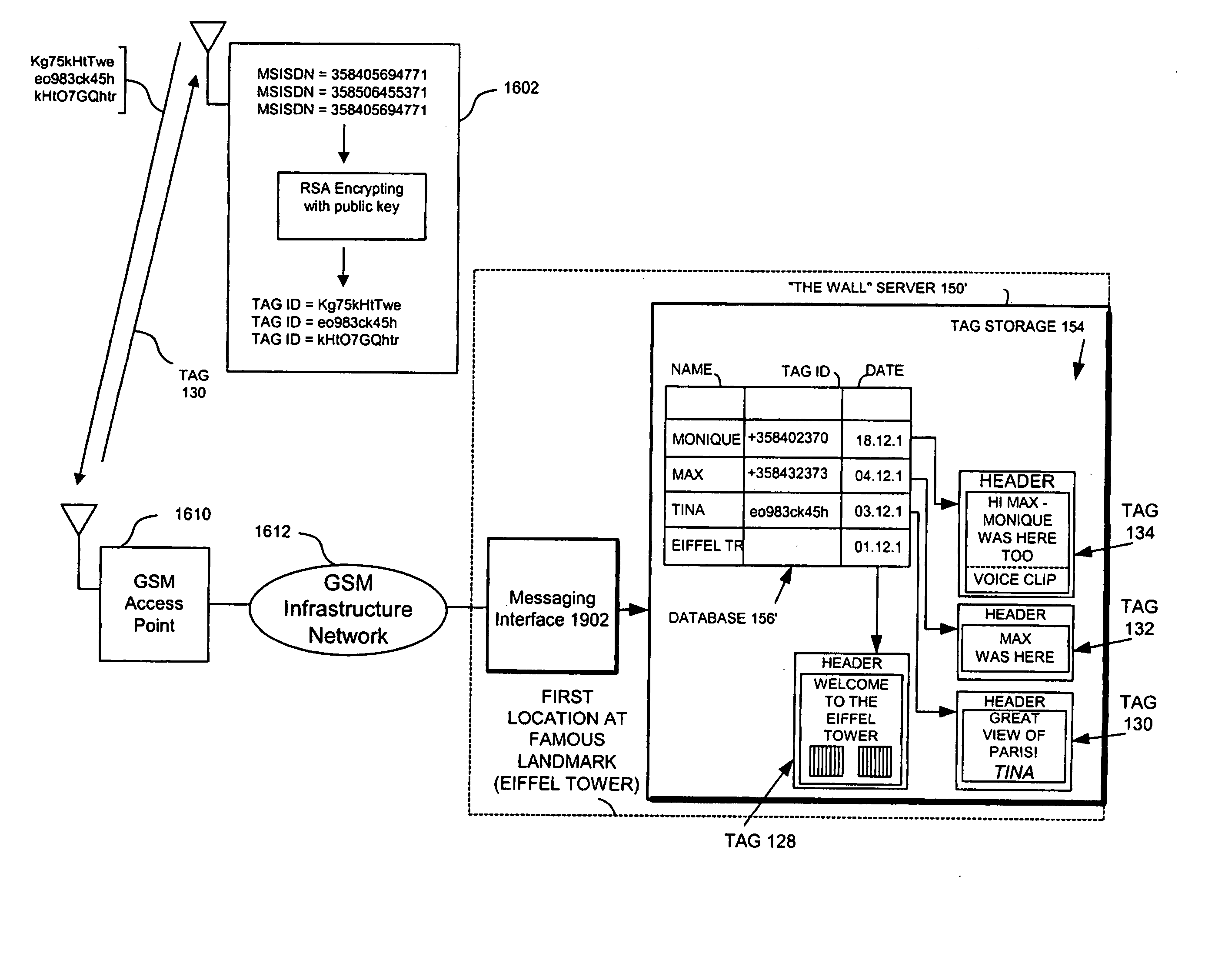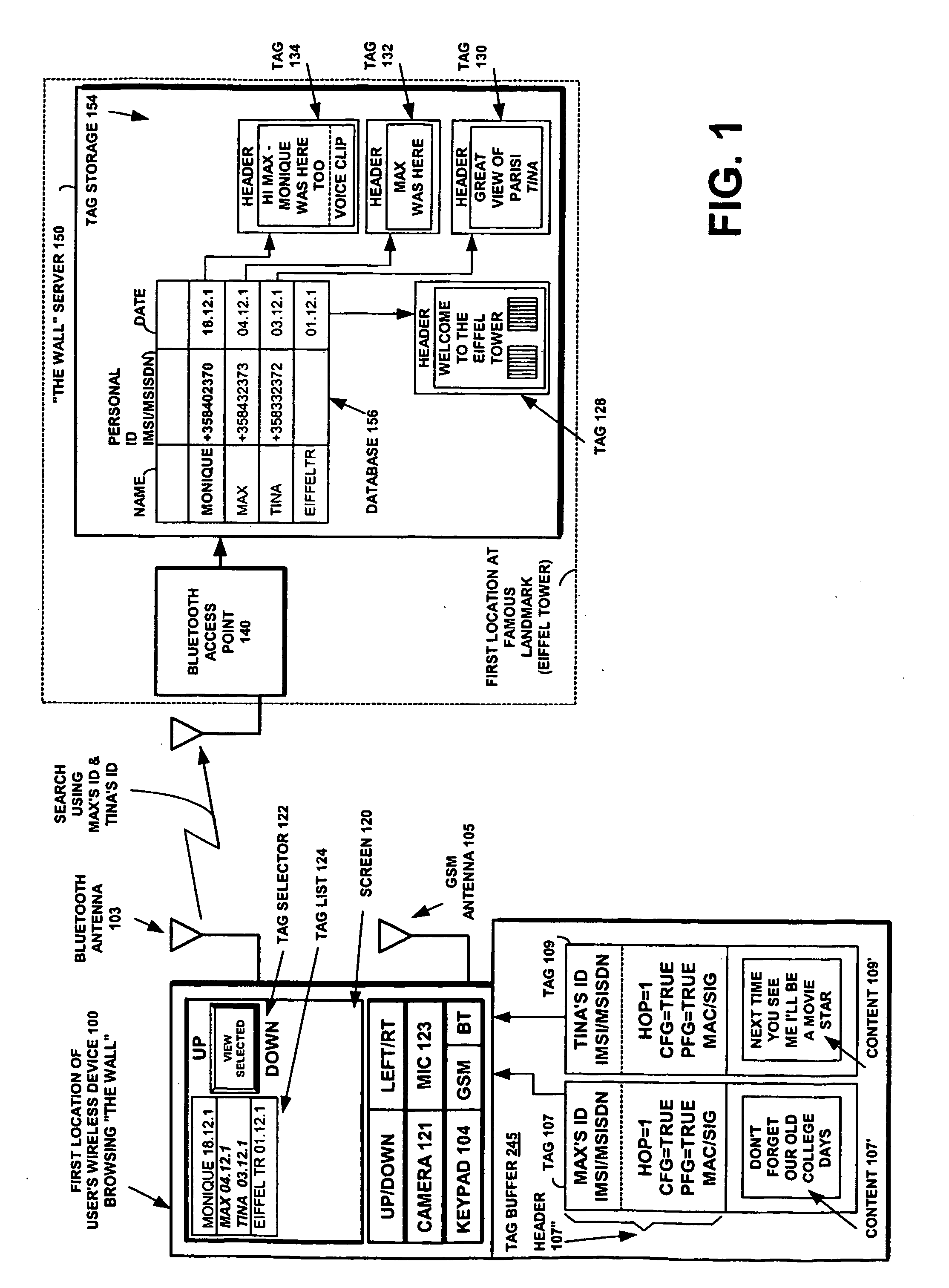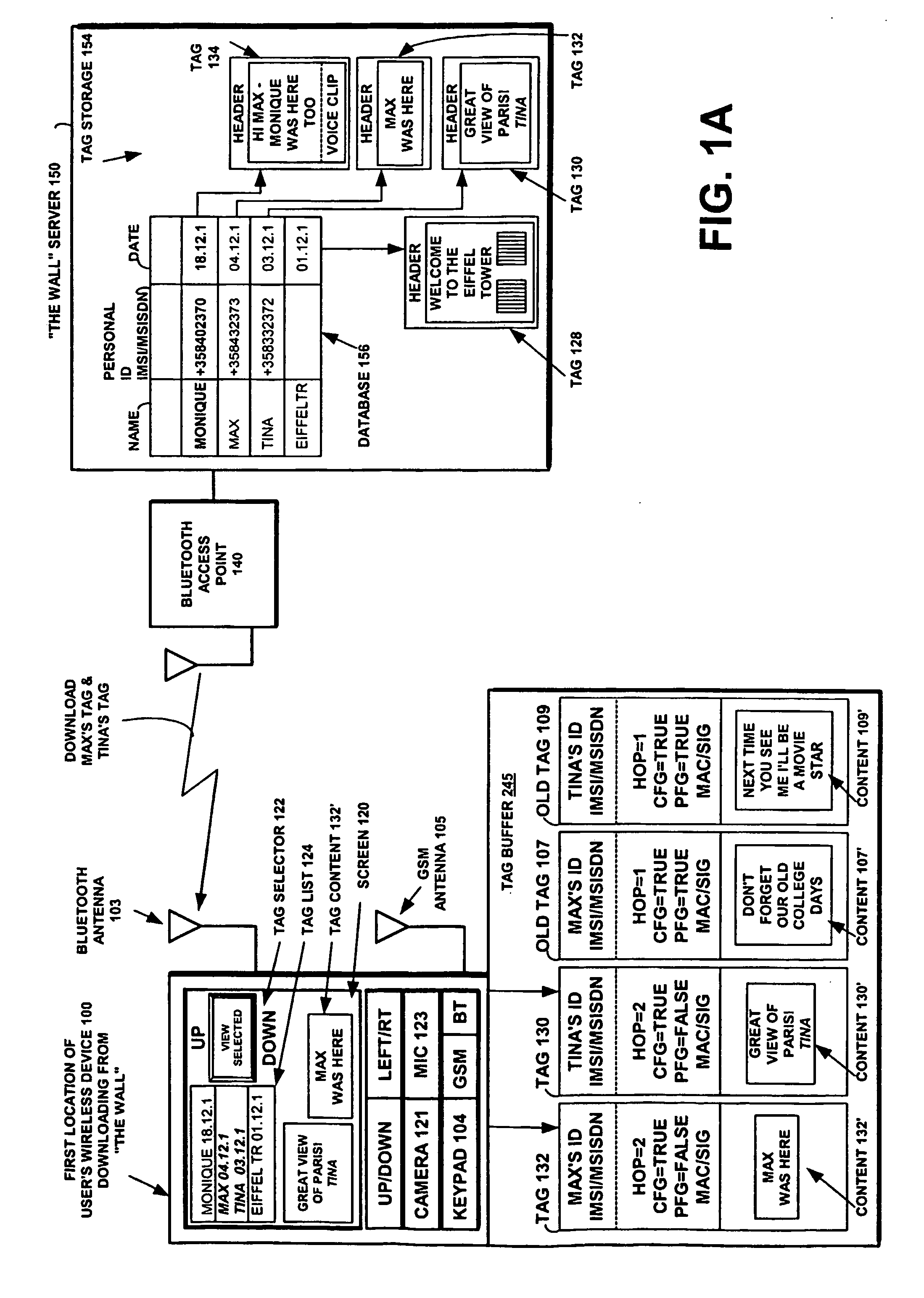Method and system for multimedia tags
a multimedia and tag technology, applied in the field of ubiquitous computing, can solve the problem of not being able to authentically attribute the modified copy to the original user, and achieve the effect of preventing receiving unsolicited tags
- Summary
- Abstract
- Description
- Claims
- Application Information
AI Technical Summary
Benefits of technology
Problems solved by technology
Method used
Image
Examples
Embodiment Construction
I. Multimedia Tags
[0069] In the following description of the preferred embodiment, reference is made to the accompanying drawings, which form a part hereof, and in which is shown by way of illustration various embodiments in which the invention may be practiced. It is to be understood that other embodiments may be utilized and structural and functional modifications may be made without departing from the scope of the present invention.
[0070] It is human nature to leave one's mark when visiting a place. Leaving one's mark can range from signing a guest book to spray-painting a wall. If a person had the possibility to leave an electronic tag commemorating the fact of their visit, such as to the Eiffel Tower, it is natural that they would do it. Leaving an electronic tag would be even more likely if it could be done inexpensively and easily with one's mobile phone. It would be an attractive feature to be able to commemorate one's visit to a famous place by leaving an electronic tag th...
PUM
 Login to View More
Login to View More Abstract
Description
Claims
Application Information
 Login to View More
Login to View More - R&D
- Intellectual Property
- Life Sciences
- Materials
- Tech Scout
- Unparalleled Data Quality
- Higher Quality Content
- 60% Fewer Hallucinations
Browse by: Latest US Patents, China's latest patents, Technical Efficacy Thesaurus, Application Domain, Technology Topic, Popular Technical Reports.
© 2025 PatSnap. All rights reserved.Legal|Privacy policy|Modern Slavery Act Transparency Statement|Sitemap|About US| Contact US: help@patsnap.com



